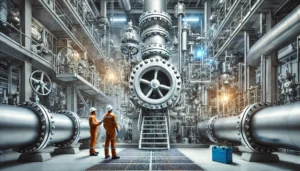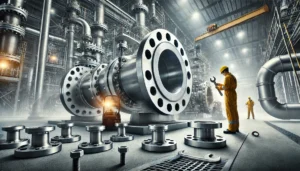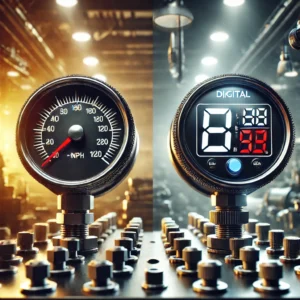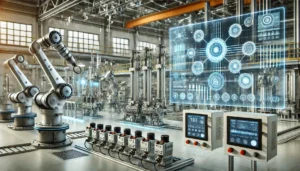With the help of valve actuators, it becomes possible to mechanize the functioning of the valves and the consequent control of fluids and gases in the industry. There are three most common types of actuators – electric, pneumatic and hydraulic which can be used for various purposes. A critical analysis of the requirements such as accuracy, rate of application, and the prevailing conditions guides one in opting for the most applicable one. A comprehensive view of their characteristics, application areas and features is as follows.
Electric Actuators
Electric actuators are devices that employ electrical energy in the form of motors to rotate valves, in effect moving them. They are remote controlled and are embedded in control systems such as SCADA and DCS which makes them precise. There is more precision and hence, they can be used in places where small adjustments are to be made. They have low operational energy requirements and also the design is neat and tidy, reducing the chances of leakages and pollution. On the downside, they are also the slowest amongst pneumatic and hydraulic which make them impractical for situations needing vigorous action. Also, their cost in conjunction with their reliance on extreme temperatures can be factors limiting their application in dangerous environments. These include flow and pressure control in plants, automatic control in facilities, HVAC for energy, and plants of food and pharmaceuticals where cleanliness is a requirement.
Pneumatic Actuators
The mechanical motion of pneumatic actuators is powered by compressed air making them ideal for swift and repetitive tasks, and are very cost effective, easy to mount and function optimally in places where fast actuation is a prerequisite. Because they do not contain electrical parts, pneumatic actuators are somewhat safer in dangerous areas and, therefore, minimize the chances of sparks or explosions. Their rugged construction guarantees dependability in different environmental conditions. Nonetheless, pneumatic systems are energy-exhaustive over long circuits and do not offer the accuracy provided by electric actuators which may result in poor placement of the valves. Plus, a steady supply of energy to pneumatic air systems is crucial for enabling consistent performance. These actuators mainly find their application in chemical plants where b quick operations are required, oil and gas facilities in explosive environments and food and beverage sectors for lower cycle supply times.
Hydraulic Actuators
The main working component of hydraulic actuators is a fluid under pressure. This is why they are used in applications that require high power. Due to the fact that they can provide a high force output, these components are fitted in large valves and heavy-duty systems. Besides always being in high force, these hydraulic actuators are reliable even in harsh conditions with high pressures and high temperatures. However, they allow smooth and precise motions which some operations may require. Hydrostatics, on the other hand, are hard to implement as they need extra parts like pumps, hydraulic hoses, and reservoirs. There IS also the risk of fluid leakage and additional costs in maintenance. As a result, hydraulic actuators are registered to be most used in offshore oil rigs, power generation plants, mining works, and aerospace applications where strength and durability are the main necessity.
Comparison of Electric, Pneumatic, and Hydraulic Actuators
Electric actuator sre the best in terms of precision control, energy usage and integration with other components or modern systems, making them suitable for remote or automatic systems. Pneumatic actuators are more compatible with hazardous environments and quickly executing similar tasks, but they do not provide the positioning accuracy of electric actuators. In most cases, heavy-duty and high-pressure hydraulic systems are installed using hydraulic actuators as they do not only provide the required power but are also extremely durable, although they are quite adapted to the workload.
Final thoughts
Medical devices manipulation by actuators show that an electric one is better in accuracy, automated control, and even control in harsh environments. However, a pneumatic one will be more applicable in areas that are speed oriented and reliability for dangerous contexts. Clearly, hydraulic actuators will be best suited for high force and heavy duty applications. This way, engineers and manufacturers are able to enhance their operations specific to the electrical, mechanical or automation system safety as well as longevity.










